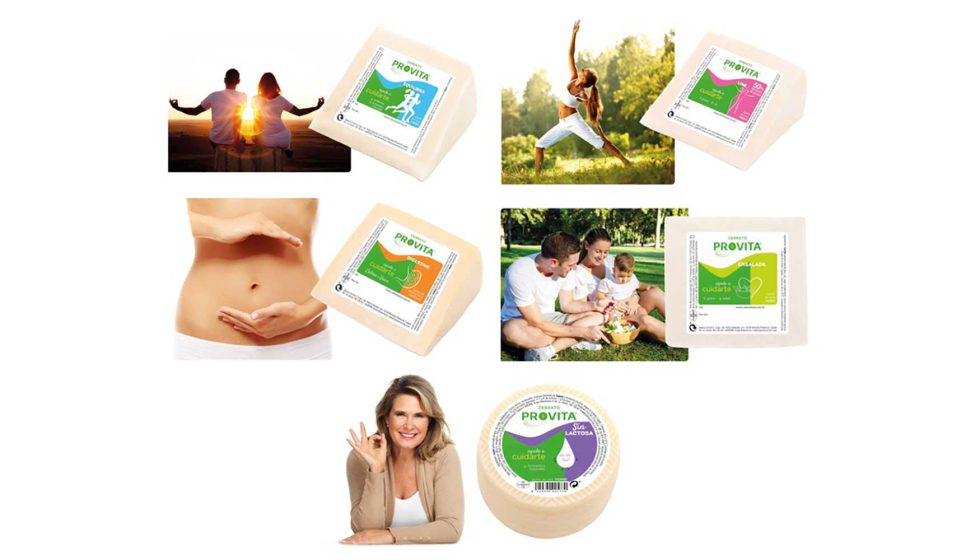Functional foods for the webinar that improve our microbiota highlighted the potential of pre- and probiotics in the food industry.
Drafting between sister companies10/11/2022
A report by Israeli startup Tastewise indicates that 33% of consumers frequently turn to food products to meet their health needs. More specifically, a study by CHR Hansen reports that 1 in 5 Spanish consumers are looking for functional foods that contain probiotics.
This data demonstrates consumers’ interest in foods that are good for their health. Finding out what’s new in functional nutrition and pre-probiotics was the topic of the Functional Foods That Improve Our Microbiome webinar, organized by CNTAon Wednesday, October 5, which was included in the Tecnomifood Network, funded by the Ministry of Science and Innovation.
David Lacasa, partner at Latern Consulting, began the meeting by explaining trends in functional, pre and probiotic foods. In his speech, he pointed out that the American market is more developed in this category than the European market. Thus, he stated that drinks containing probiotics and prebiotics are the category showing the best development in America. Lacasa, basically, refers to kombucha, the staples of probiotics and dairy products that are the references that dominate the industry. Regarding dairy, he added, it is a growing segment, because breakfast is a good occasion for consumption, related to health.
Also, the salient point was the difference between American consumers and southern European consumers. This lies in the fact that for the United States the concept of function is higher than that of taste, an aspect unimaginable in southern Europe.

The virtual meeting demonstrated novelties and trends in functional foods, in particular in foods containing probiotics, which, due to their effect on the intestinal flora, provide a recognized benefit in strengthening the immune system.
Regarding the strategy to follow to introduce functional products in Spain, Lacasa talked about promoting concepts such as nature and explained that the processes used to make food are always done and that it can be done at home.
Similarly, David Lacasa highlighted the importance of communication in this type of product and that it is supported by dissertations because it is reason to believe that the function is correct, although in some cases the communication is complicated because the effect of the product is not. Effective – Immediate, but the scientific endorsement and narrative used to explain the properties of the food help the consumer better understand them.
For the future, the next step in Lacasa functional foods will be to move from the concept of health to well-being, with a more holistic view, where not only the body is important, but also the mind, which is a very important aspect. in focus. Vogue now. Within this world, the consultant expects to arrive the food sector of biopsychology, products that aim to improve mental state by affecting the microbiota.

Cerato provita cheese.
Cerato Provita, an example of functional cheese
Subsequently, Raquel Fernandez Gonzalez, Director of the Cerato Factory, was introduced to the audience Closed Provita, a range of cheese with probiotics, for two years on the market. Raquel Fernandez also explained the reasons for Cerato’s commitment to this series of functional cheeses. With the arrival of covid-19 from the company, they wanted to move forward and that’s why they looked for products that would be included in the concept of fun and health.
On this latter idea, he explained, the decision to add probiotics to his new cheese line was based on the large number of clinical studies related to the consumption of probiotics and their benefits to human health, integrating the two most important. World Documented Probiotics: LGG and BB-12 by CHR Hansen and in the population’s growing concern about the immune system.
Additionally, Fernandez also echoed CHR Hansen’s study on functional foods to explain why they decided to launch the Provita range. Some of the conclusions I highlight are that 30% of Spanish consumers are looking for functional foods that are beneficial for the gut and immune system. In Spain, the percentage of consumers who eat probiotics is often higher than in other European countries (France, Germany and Italy, among others), and that cheese consumption is proportional to the most common moments in which probiotics are consumed: food and snacks Snack time or at night.
Parabiotic, trend following
At the conclusion of the webinar, CNTA Scientific and Technical Director Raquel Vertu, in response to a question from the audience, noted that in order to keep a probiotic alive, with its properties, it is necessary to maintain or carry the cold chain. from the water supply process.
Of course, Vertu warned of an upcoming trend: formulating food with Parabiotics (dead microorganisms), since it is scientifically seen that the functional activity that many microorganisms develop is not because they are alive, but because of them. The structures they have, which exert a health effect when they reach the colon, resulting in cost savings.
Companies or related entities
National Center for Technology and Food Safety – Ebro Lab

“Beeraholic. Friend of animals everywhere. Evil web scholar. Zombie maven.”
